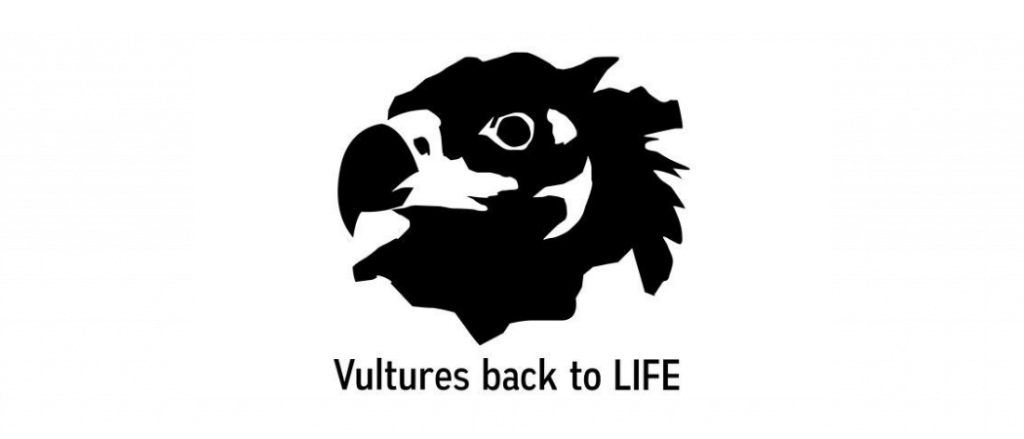
The Vultures Back to LIFE project has been releasing Cinereous Vultures in the Balkan Mountains, Bulgaria, as part of reintroduction efforts for four years. In 2021, these conservation actions resulted in a significant milestone – the return of the Cinereous Vulture as a breeding species in the country decades after its extinction.
Reintroducing the Cinereous Vulture in Bulgaria
After the successful reintroduction of the Griffon Vulture between 2010-2016 and the ongoing efforts to increase the locally established colonies, the first release of Cinereous Vultures to reintroduce the species in the Balkan Mountains (and Bulgaria) took place in 2018. The Vultures Back to LIFE team released the first birds in the Eastern Balkan Mountains (EBM) – Kotlenska Planina SPA near Kotel in 2018. The team continued with releases of Cinereous Vulture at the Sinite Kamani Nature Park in 2019 and 2021 and Vrachanski Balkan Nature Park (VBNP) in 2020 and 2021.
Fifty-one individuals were released so far, which led to the successful establishment of local nuclei in the two distinct sites in Bulgaria – EBM and VBNP. A total of 31 birds survived, of which 29 have successfully settled in Bulgaria (13 in EBM and 16 in VBNP) and two abroad (one in Greece, one in Turkey).
Cinereous Vulture returns as a breeding species
Thanks to the releases and targeted conservation actions, at least five breeding pairs formed and expressed breeding behaviour in 2021 – three in EBM and two in VBNP. Furthermore, a pair successfully fledged the first wild-hatched chick in Kotel last year, marking the very first successful reproduction of the species in Bulgaria for decades!
Highlights from the reintroduction process
The project has reached many milestones since its beginning. Highlights from the reintroduction process of the Cinereous Vulture in the Balkan Mountains between 2020-2021 are as follows:
- From the releases and the attraction of wild “visitor” birds, the team counted 20 Cinereous Vultures in VBNP and 17 in EBM in 2021 – a new record for the two sites of simultaneously observed individuals of the species.
- The exchange of individuals between the colony of the species in Dadia-Soufli-Lefkimi Forest National Park (hereafter Dadia) in Greece and the Balkan Mountains was confirmed by visits of marked birds from each site to the other.
- The exchange of individuals between the VBNP and EBM nuclei was confirmed.
- Fifteen mortality cases were registered in 2020-2021 (19 in total up to now), which provides for an overall survival rate of about 62% from the released individuals (n = 51), so far. The acclimatization aviary method performs better in the survival rate of the released individuals (68,18%) compared to the hacking (artificial nest) method (28,57%). The VBNP shows better results in survival compared to EBM (80% and 64% respectively).
- The acclimatization aviary method performs better in the settling of released individuals in the area of release (94% in VBNP and 78% in EBM) compared to the hacking (artificial nest) method (0%).
- The project observed several wild Cinereous Vultures in both release sites. Two of them were captured and tagged with GPS transmitters. The data received suggests a different origin for the two birds – Dadia and Turkey (Middle East).
- The Griffon Vulture numbers continue to increase in EBM with 25-28 pairs and VBNP with 23-25, which produced 14 and 12 fledgings respectively in 2021.
- A hundred and twenty tones of food per year are deposed in the Project sites along the Balkan Mountains – 60 tones of food were provided in the VBNP feeding site in 150 feeding events per year and the same amount of food in EBM but for two feeding sites (SKNP and Kotel).
For more details, you can access and download the full 2020-2021 report (in English) on the reintroduction of the Cinereous Vulture (Aegypius monachus) in the Balkan Mountains, Bulgaria below.
The Vultures Back to LIFE project

Led by Green Balkans in collaboration with the Fund for Wild Flora and Fauna, Vulture Conservation Foundation, Junta de Extremadura and Euronatur, the Vultures Back to LIFE project aims to reintroduce the Cinereous or Eurasian Black Vulture to Bulgaria. The team will transfer and release into the wild around 60 birds, some coming from captive-breeding backgrounds but mostly from Spanish wildlife rehabilitation centres. The project will also create supplementary feeding stations, increase populations of wild herbivores, improve nesting conditions and tackle some of the major threats to support the return of the species.

Source:
IVANOV I., E. STOYNOV, G. STOYANOV, S. MARIN, L. BONCHEV, I. STOEV, S. STANCHEV, H. PESHEV, Z. NIKOLOVA, N. VANGELOVA, J. ANDEVSKI & A. GROZDANOV (2022): Re- introduction of the Cinereous Vulture Aegypius monachus in Balkan Mountains, Bulgaria, Biannual Report 2020-2021. Green Balkans, Stara Zagora & Fund for Wild Flora and Fauna, Blagoevgrad. DOI: 10.13140/RG.2.2.36661.76001



